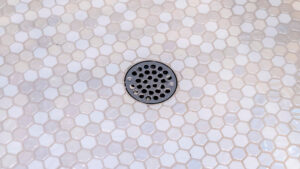In the world of industrial engineering, ensuring the safety and efficiency of machinery is paramount. A crucial component in this regard is the pressure relief valve for air compressors. This essential device plays a vital role in maintaining optimal pressure levels, preventing potential hazards, and enhancing the lifespan of your equipment.
The pressure relief valve for air compressors serves as a safety mechanism. It is designed to release excess pressure from the system, thereby preventing potential damage or failure. This article delves into the intricacies of these valves, providing valuable insights for industrial engineers and enthusiasts alike.

Understanding the Basics of Pressure Relief Valves
Pressure relief valves are critical components in various industrial applications. They are engineered to open at a predetermined pressure level, allowing excess pressure to escape and safeguarding the system from overpressure situations.
The Functionality of Pressure Relief Valves
The primary function of a pressure relief valve is to maintain system pressure within safe limits. When the pressure exceeds the set threshold, the valve opens, releasing the excess pressure and closing once normal levels are restored.
Components of Pressure Relief Valves
These valves consist of several key components, each playing a crucial role in their operation. The main parts include the valve body, spring mechanism, disc, and seat. Understanding these components is essential for proper maintenance and troubleshooting.
Valve Body
The valve body houses all the components and provides the necessary framework for the valve’s operation. It is typically made of durable materials to withstand high pressure and temperature.
Spring Mechanism
The spring mechanism determines the pressure setting of the valve. It ensures that the valve opens at the desired pressure level and closes once the pressure is normalized.
Disc and Seat
The disc and seat form the sealing mechanism of the valve. The disc lifts off the seat to release pressure and returns to its position once the pressure is within acceptable limits.
Importance of Pressure Relief Valves in Air Compressors
Pressure relief valves are indispensable in air compressors, ensuring safe operation and preventing catastrophic failures. They protect the system from overpressure, which can lead to equipment damage and safety hazards.
Preventing Overpressure Situations
By releasing excess pressure, these valves prevent overpressure situations that could compromise the integrity of the air compressor system.
Enhancing Equipment Longevity
Properly functioning pressure relief valves contribute to the longevity of air compressors by maintaining optimal pressure levels and reducing wear and tear.
Types of Pressure Relief Valves
There are several types of pressure relief valves, each suited for specific applications. The most common types include safety valves, relief valves, and pilot-operated valves.
Safety Valves
Safety valves are designed to open quickly once the set pressure is reached, providing immediate relief and ensuring safety.
Relief Valves
Relief valves open gradually to release pressure and are often used in liquid systems.
Pilot-Operated Valves
Pilot-operated valves offer precise control over pressure settings and are ideal for high-pressure applications.
Installation and Maintenance Tips
Proper installation and maintenance of pressure relief valves are crucial for their effective operation. Regular inspections and testing ensure that the valves function correctly and provide the necessary protection.
Installation Best Practices
Ensure that the valve is installed in the correct position and orientation. Follow manufacturer guidelines for installation to prevent leaks and other issues.
Regular Maintenance Checks
Conduct regular maintenance checks to identify any wear and tear. Replace any damaged components promptly to maintain the valve’s efficiency.
Common Issues and Troubleshooting
While pressure relief valves are reliable, they can encounter issues such as leaks, improper pressure settings, and mechanical failures. Understanding these common issues and how to troubleshoot them is essential for maintaining system integrity.
Leaks
Leaks are often the result of worn-out seals or improper installation. Inspect the valve regularly to ensure all components are in good condition.
Improper Pressure Settings
Ensure that the pressure settings are calibrated correctly to prevent the valve from opening prematurely or not at all.
Mechanical Failures
Mechanical failures can occur due to wear and tear or manufacturing defects. Regular inspections and maintenance can help identify and rectify these issues.
Choosing the Right Pressure Relief Valve
Selecting the right pressure relief valve for your air compressor is crucial for optimal performance. Consider factors such as pressure range, temperature, and application requirements when choosing a valve.
Pressure Range
Choose a valve with a pressure range that matches your system’s requirements to ensure effective protection.
Temperature Considerations
Ensure that the valve can withstand the operating temperature of your system to prevent damage and ensure longevity.
Application Requirements
Consider the specific requirements of your application, such as flow capacity and material compatibility, when selecting a valve.

Frequently Asked Questions
What is the purpose of a pressure relief valve in an air compressor?
A pressure relief valve is designed to release excess pressure from an air compressor system, preventing overpressure situations and ensuring safe operation.
How often should pressure relief valves be tested?
It is recommended to test pressure relief valves at least once a year to ensure they function correctly and provide the necessary protection.
Can pressure relief valves be repaired?
Yes, pressure relief valves can be repaired if they encounter issues. However, it is crucial to follow manufacturer guidelines and consult with professionals to ensure proper repairs.
For more detailed insights on pressure relief valves, visit this informative article.
Additionally, explore more about bathroom leak issues and solutions at bathroom leak issues for comprehensive understanding.
This article contains affiliate links. We may earn a commission at no extra cost to you.




